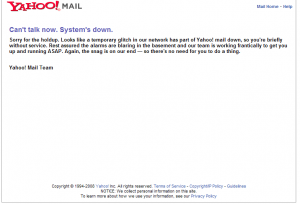I decided to use Fargo.io to write the previous post, since it was a long and complex piece with a lot of hierarchical structure. Lots of lists, etc. Let me preface by saying this is wonderful functionality and I am very excited about it, not least because it provides inherent backup of blog posts to dropbox.
That said, there are various issues that need refining. Here are some of my observations:
Fargo only selects the current heading and subheadings for the post. It will use the current heading as title and subheadings as the post content. This is not optimal; by default, Fargo should use the title of the entire outline as the post title and the entire outline body as the post body. I had to create a redundant heading and demote the entire rest of the outline underneath it to get it to work properly.
Headings and subheadings correctly use LI tags, but they force the CSS attribute “list-style-type” to “none”. In a blog post, you want the natural LI icons to appear and not be suppressed.
When exporting from Fargo to WordPress, adding paragraph tags is redundant, as WordPress renders the post content with them automatically. P tags should be stripped out when publishing to WP.
Likewise, there is no need for any additional class names (liConcord, pConcord, liLevel3, etc). All style is handled by WordPress themes and this CSS clutters the post content. We should not have any default styles added by the composer – clean HTML only, no CSS.
Numbered lists are not recognized by Fargo – I used a 1. 2. prefix but this does not create OL list type at the HTML end. Auto-detection of numbered lists is a must-have feature.
Entering new headings above the current one should be possible by placing the cursor at the start of a heading and pressing Enter. Currently, this opens a new heading below, not above.
Images are not supported. In fact if you add an image via the wordpress interface and then later edit the post again with Fargo, you will lose your images (it will overwrite the edits.)
Finally, it is not possible to copy and paste multiple headings and subheading content from the outliner. You can only select one heading at a time. There should be a plaintext export feature at the very least (with whitespace tabs for the indentation levels).
I don’t want to discourage Dave and the fine folks at Small Picture or seem overly picky. These are however important issues that affect a wordpress blogger’s workflow – I loved composing the post in Fargo but now I will have to re-edit the post after I publish to add images, strip out the CSS, etc. Due to that drawback, there isn’t a net value-add to using Fargo for WP blogging, yet. But there is so much potential here that I am very hopeful.
UPDATE: Dave responded to this post on Twitter:
@azizhp — Aziz, I still think we made the right choices, and if you use the product you will come to agree with them.
— Dave Winer ? (@davewiner) May 2, 2013
I am uncertain if Dave understood my critique – I was not asking for changes to Fargo’s user interface, but rather the formatting that is generated when exporting from Fargo to wordpress. I am happy to embrace the Outliner Way when composing, but Fargo imposes metadata on WordPress above and beyond outline structure. That metadata is not central to the user experience of Fargo si Iam baffled by Dave’s insistence that there’s no reason for change.
At any rate, I will certainly keep using Fargo for other purposes, but if the wordpress functionality is frozen at the current state then I cannot recommend Fargo as a WordPress authoring tool. I am still optimistic for Dave’s promise of Evernote support.


 I’m starting a new category, called “cloudware” which is how i intend to refer to software that runs in the cloud. This will be my way of documenting what cloudware I actually use and fine useful.
I’m starting a new category, called “cloudware” which is how i intend to refer to software that runs in the cloud. This will be my way of documenting what cloudware I actually use and fine useful.